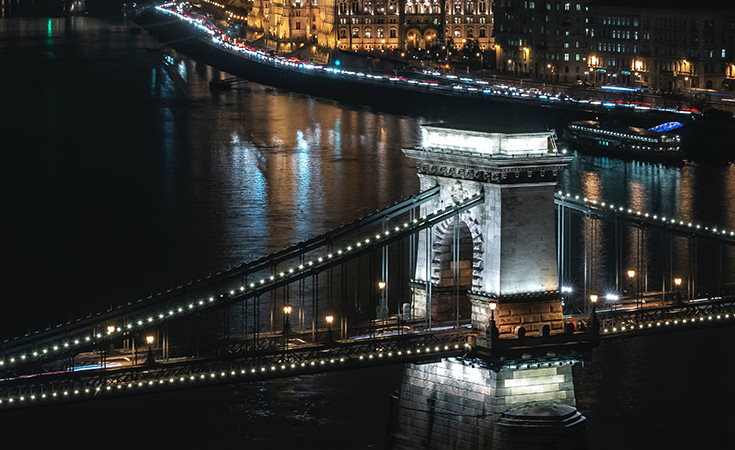
The Hungarian capital is also famous for the Széchenyi Chain Bridge, a symbol of the city connecting Buda and Pest. This is the first stone bridge in Hungary, spanning over the Danube as a gem of architecture. Even if you have never been to Budapest, you must have seen this bridge in music videos, movies, TV shows, as well as in Dan Brown’s novel Origin.
The bridge was desinged by English architect William Tierney Clark in 1839, with construction supervised by Scottish engineer Adam Clark. It was funded by the Greek merchant Georgios Sinas, whose name was inscribed on the base of the south-western base of the bridge on the Buda side. Except for the name Chain Bridge, this architectural gem is also known as István Széchenyi Bridge after the man who was one of the initiators of the bridge’s construction.
The bridge impacted the economic growth of Budapest, had a great influence on further development of the city and its culture. It is a magnificent cast iron bridge, with its appearance, aided by the lion statues making it one of the most beautiful bridges in Europe. Although legend has it that the lions on the bridge don’t have tongues, they actually have them, but they are hidden from sight. The bridge was one of the largest in the world when it was constructed. It got the name it has today in 1898, and the bridge is a symbol of the advancement of Budapest.
During World War Two, the bridge suffered significant damage. It was blown up by the Germans, only to be rebuilt and re-opened in 1949. Still visible on the bridge are inscriptions on the Pest side, stating: “To commemorate the only two surviving bridges designed by William Tierney Clark: The Széchenyi Chain Bridge over the Danube at Budapest, and the suspension bridge over the Thames at Marlow, England.“
Author of the article: Ljubiša Đuričić
Photo by Daniel Olah on Unsplas